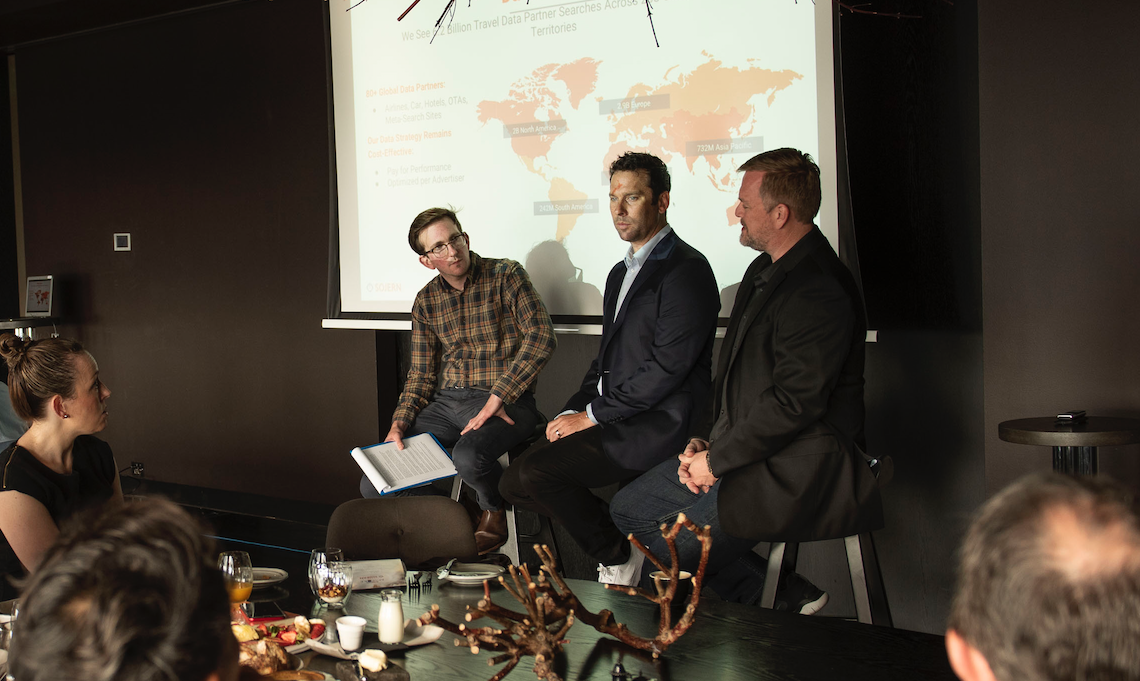Travellers binned the brochures to book themselves – so how do marketers reach them?
Not so long ago, booking a holiday was a simple – if not entirely stress-free – excursion that lifted off one winter afternoon and followed a fairly predictable flight path. After watching a few sun-drenched ads during Home & Away, mum and dad would drag the family to the travel agent, hulk home a stack of brochures, squabble over the pros of cons of Bali vs Byron Bay, consult with nan on the phone, trek back to town for some more literature, before deciding that, actually, it’s probably just best to return to the same all-inclusive as last year.

From left to right: Mumbrella’s Adam Thorn with Sojern’s Chris Greenwood and Matt Harris talking at a sponsored Bespoke breakfast in Melbourne
Today, it’s very different. “There were probably 350 touchpoints in the path to purchase three years ago,” explains Chris Greenwood, director of sales ANZ for travel ad platform Sojern. “Now we can see it’s often more than 700. Technology has completely changed the research and booking process for consumers.”


